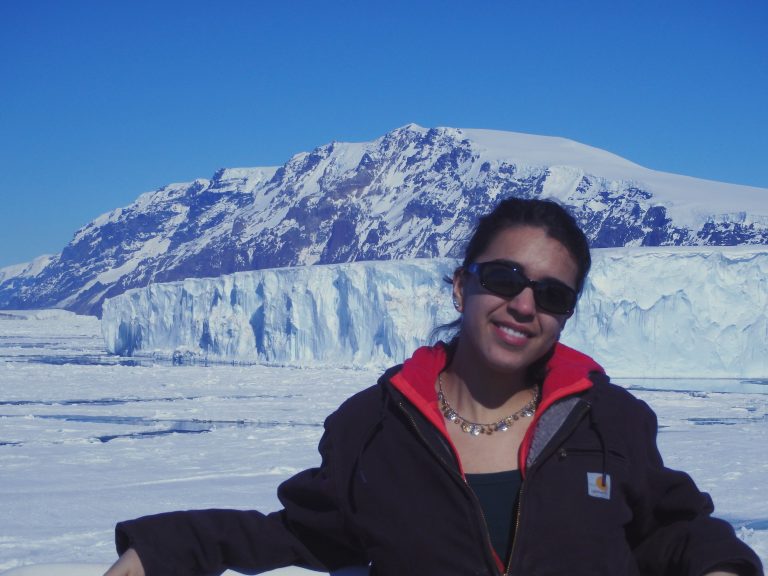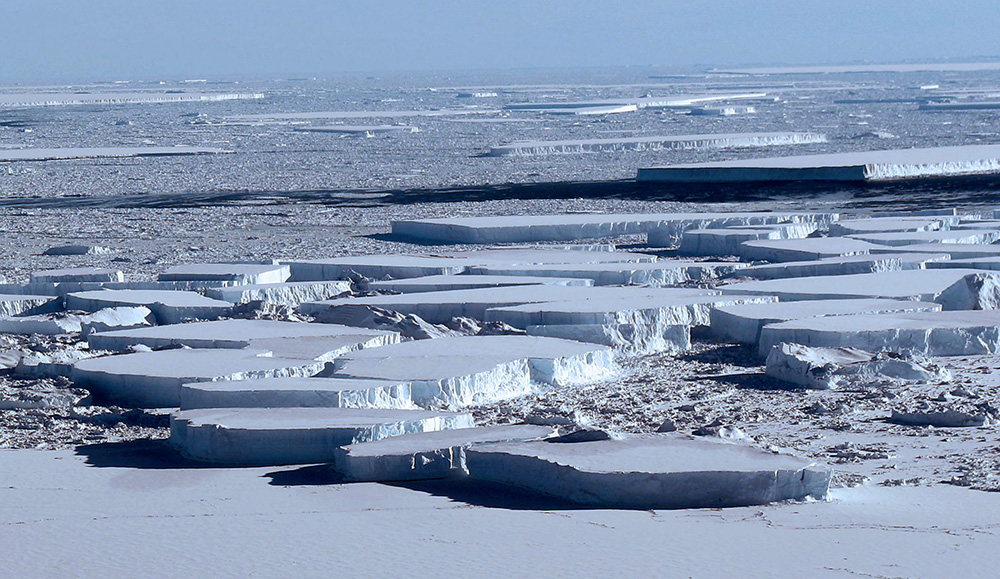Written by: Dr. Brad Rosenheim, Associate Professor and Dr. Tim Conway, Assistant Professor at USF College of Marine Science.
ST. PETERSBURG, FL – Scientists at the USF College of Marine Science (USF CMS), in collaboration with scientists in Korea, have discovered a new pathway by which reduced iron may be sourced to the oceans in normal climate conditions. They report their results in Nature Communication.
Iron is important for plant-like algae that form throughout the world’s oceans, taking carbon dioxide from the air to form organic matter which can sink to the bottom of the ocean and be buried in ocean floor sediments. Iron is very insoluble in the oceans and so becomes a limiting micronutrient despite its abundance in Earth’s crust. However, when iron is sourced to the ocean in its reduced form, Fe(II), it is more available to carbon-sequestering marine algae. The bad news is that, as ice dynamics around the highly productive (lots of algae) Southern Ocean change, this source will change as well.
Scientists at the USF CMS played several key roles in this discovery. It began with the unprecedented opportunity to recover a sediment core extremely close to the Larsen C Ice Shelf of the Antarctic Peninsula during an expedition of the R/V I/B Araon, operated by the Korean Polar Research Institution. Usually sea ice conditions in the frigid waters of the Weddell Sea would prohibit taking such a core, even working aboard a state-of-the-art science vessel like the R/V I/B Araon.

Former USF CMS student Dr. Cristina Subt in Antarctica aboard Korean ice breaker R/V I/B Araon.
Co-author Dr. Cristina Subt, a former Ph.D. student at the CMS, developed a chronology
for the sediment core by developing a unique approach to date different sections of
the sediment core. Independent from this effort, Ph.D. student Jaewoo Jung at Yonsei
University related microbial communities in different layers of sediment to transformations
of the common clay mineral, illite. These changes would release reduced iron.
Dr. Brad Rosenheim and Dr. Tim Conway developed a conceptual model for the release of reduced iron from underneath the ice shelf. The CMS researchers noted that recent exposure of the sediments to seasonal open ocean water after a small retreat of the front of the ice shelf would change the delivery of this iron to the ocean by oxidizing the Fe from the soluble Fe(II) to the insoluble Fe(III) state. This change was indicated by the fact that the uppermost sediment shows evidence of mixing by organisms that live in that surface mud as opposed to deeper sediment units which were laminated (showing horizontal layers). That means that the iron-reducing conditions occurred in layers of sediment that were low in oxygen and so were not disturbed by organisms requiring oxygen, keeping the iron in its reduced ‘bioavailable’ form which may diffuse out into the overlying seawater. Oxygenation of the topmost sediment would change the reduced iron into a less useful form for organsisms, and shut off this process.
Most importantly, as more ice shelves shrink around Antarctica, more laminated sediments containing illite will become oxygenated. It remains to be determined what these changes will do to the overall cycling of iron in the Southern Ocean, but this pioneering study suggests that it may result in less iron supply to the ocean, and therefore perhaps less removal of carbon dioxide from the atmosphere.
